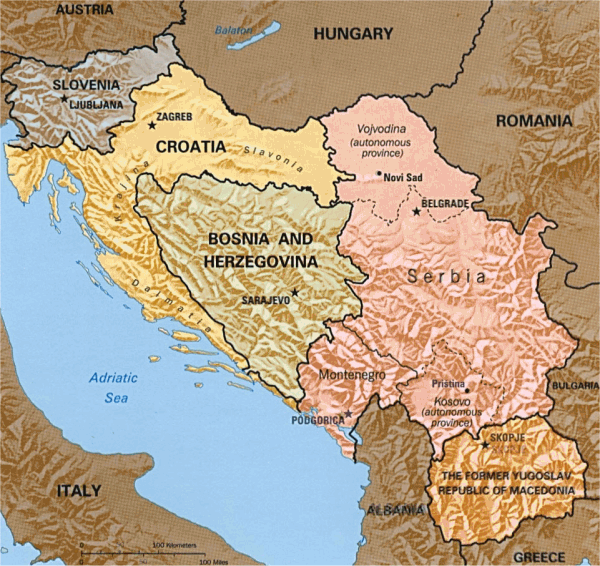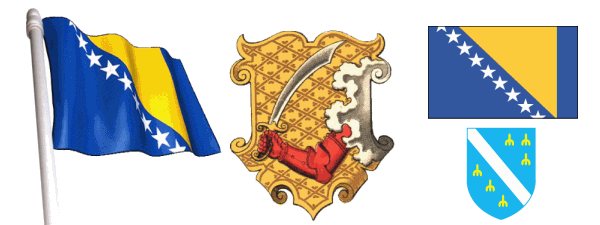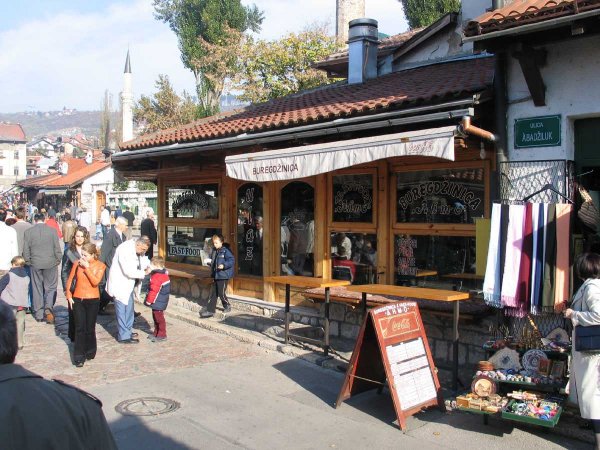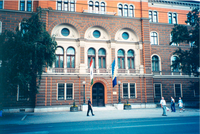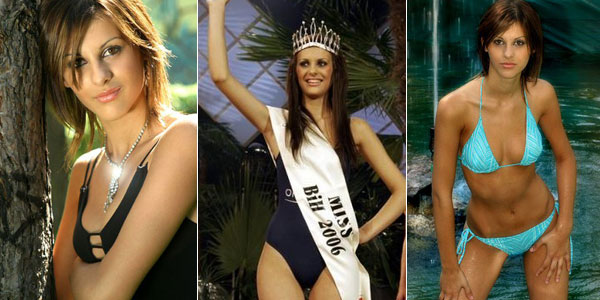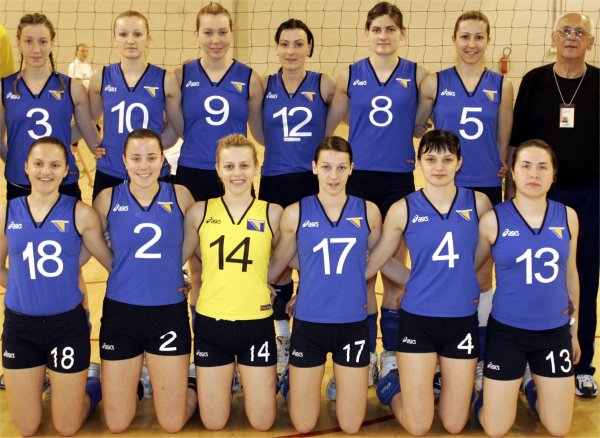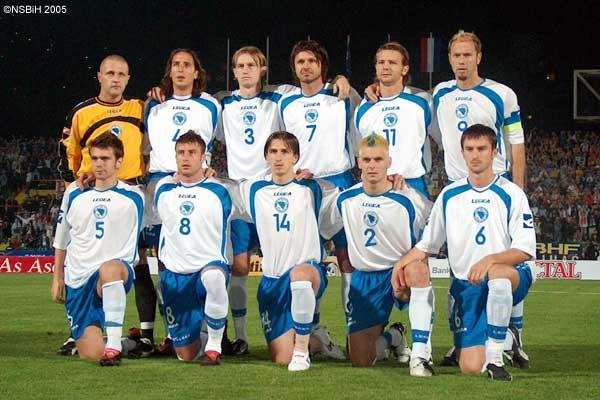Bosnia
Bosnia and Herzegovina make up a triangular-shaped republic, about half the size of Kentucky, on the Balkan peninsula. The Bosnian region in the north is mountainous and covered with thick forests. The Herzegovina region in the south is largely rugged, flat farmland. It has a narrow coastline without natural harbors stretching 13 mi (20 km) along the Adriatic Sea.
Bosnia was formerly part of Socialist Yugoslavia. From 1945 to 1991 Bosnia was not independent. The Federal People's Republic of Yugoslavia was composed of six republics: Serbia, Croatia, Bosnia and Herzegovina, Macedonia, Slovenia, and Montenegro, as well as two provinces, Kosovo and Vojvodina.
In April 1992 Bosnia and Herzegovina declared independence. Bosnia was the most ethnically diverse of all the Yugoslavian republics. According to the 1991 Yugoslavian census, Bosnia was 43% Muslim, 31% Serbian, and 17% Croatian. War soon broke out among the different groups during the 1990s.
The wars of Yugoslav secession involved complex and disputed claims for self determination and independence. In June 1991 Slovenia and Croatia declared independence, thus beginning the process of dissolution. Bosnia-Herzegovina’s declaration of sovereignty was followed by a referendum for independence in February 1992. Full-scale hostilities started in April, when Bosnian Serbs responded by trying to partition the Republic along ethnic lines, join Serbia, and form a “Greater Serbia.”
Most Serbs wanted to keep Bosnia as part of the Yugoslav federation. The declaration of sovereignty was boycotted by the great majority of Bosnian Serbs even though the majority vote was for independence.
From March 1992 to November 1995 the Bosnian war took place. The war involved neighboring countries Croatia and Serbia and Montenegro, making it difficult to determine if it was truly a civil war. Both the Croatian and Serbian presidents had planned to partition Bosnia. The Serbian minority was aided by the Serbian Yugoslav army took the offensive and conquered Sarajavo, then began eliminating the Muslim population. Croatia also began expansion through military force during the conflict.
Bosnian Serbs had conquered a little over three-fifths of Bosnia. The war raged on until the International community (NATO) interfered by bombing the conquering Serbs in August and September of 1995. This drove the Serbs into Tuzla, Zepa, and Srebrenica where they began killing the population in those areas. About 250,000 died in the war between 1992 and 1995.
In November 1995, the Dayton Peace Agreement (DPA) ended the three-and-a-half-year war. Bosnia-Herzegovina was maintained as an independent and unified state, with a multi-ethnic and democratic government with limited functions in foreign, economic, and fiscal policy. Internally the country was divided between two “Entities” with extended sovereign prerogatives: a Croat/Muslim Federation covering 51% of the territory and a Serb-led Republika Srpska (RS) covering the remaining 49%.
Despite continued tension in Bosnia, free elections took place in 2006 with the Serbian coalition defeating the Muslim-Croat Federation by a narrow margin. In January 2007, Bosnian Serb Nikola Spiric took over as prime minister and formed a new government. Violence continues in this region to this day, although kept somewhat in check by the international community.
Sarajevo is the capital of present day Bosnia. The city has a population of just over half a million (582K) and is the largest city in Bosnia. The population of Bosnia is estimated at just over 4.5 million. Other large cities include Banja Luka (190K), Tuzla (119K) and Mostar (91K).
There are three primary languages spoken in the region today, Bosnian, Croatian, Serbian. Islam is the dominate religion in Bosnia now at 40%, the other 60% is a mix of other faiths including Christianity.
Bosnia and Herzegovina became a member of the United Nations in 1992. Since the end of the Bosnian war the United States government has donated hundreds of millions of dollars of U.S. citizen taxpayer money to help with reconstruction, humanitarian assistance, economic development, and military reconstruction in Bosnia and Herzegovina.
Sarajevo
Sarajevo is the capital and largest city of Bosnia and Herzegovina, founded by the Ottomans in 1461. The river Miljacka runs through the city. Archduke Franz Ferdinand of Austria and his wife Sophie were assassinated in Sarajevo on 28 June 1914, which is considered the historical event that began World War I. Sarajevo hosted the 1984 Winter Olympics
The Presidency of Bosnia and Herzegovina (Predsjedništvo Bosne i Hercegovine) is the head of state of Bosnia and Herzegovina. The building of the Presidency is located in central Sarajevo.
According to the Article V of the Constitution, the Presidency consists of three members: one Bosniak and one Croat elected from the Federation and one Serb elected from the Republika Srpska. They all serve four-year terms.
The member with the most votes becomes the chairman (the President of the Presidency) unless he or she was the incumbent chairman at the time of the election, but the chairmanship rotates every eight months, to ensure equality.
People of Bosnia
- Miss Bosnia Erzegovina 2006: Azra Gazdic
- FIVB Federation Volleyball 2006 Bosnian team
- Bosnian National Football Team 2005
